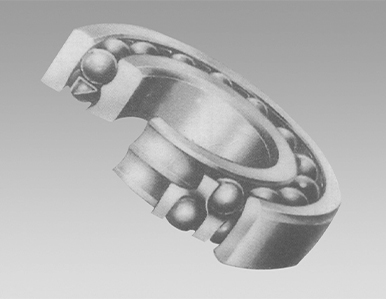
10 月 . 18, 2024 08:00 Back to list
angular contact ball bearing back to back
Understanding Angular Contact Ball Bearings Back-to-Back Configuration
Angular contact ball bearings are a crucial component in various machinery and mechanical systems, effectively managing both radial and axial loads
. One significant arrangement of these bearings is the back-to-back configuration, which presents unique advantages in certain applications.In a back-to-back configuration, two angular contact ball bearings are installed with their inner races facing away from each other. This arrangement allows the bearings to support both radial and axial loads in opposite directions, providing improved rigidity and stability. This is particularly beneficial in applications where forces may act in both axial directions, such as in spindle bearings in machine tools.
One of the primary advantages of back-to-back mounted bearings is their ability to distribute loads more evenly. By positioning the bearings this way, the overall load-carrying capacity of the assembly increases, potentially extending the operational life of the bearings. Additionally, this configuration can minimize the risk of misalignment, which is crucial for maintaining precise positioning in high-speed applications, such as in robotics or aerospace engineering.
angular contact ball bearing back to back

Furthermore, the back-to-back arrangement enhances the stiffness of the bearing setup. When a load is applied, the geometry of the back-to-back arrangement helps resist deflection more effectively than other configurations, such as face-to-face or adjacent mounting. This increased stiffness is vital in maintaining accuracy and performance in precision applications, ensuring that any shifting of components is minimized.
One of the considerations when using back-to-back angular contact ball bearings is the need for proper preload. Preloading involves applying a specific amount of axial load to the bearings to eliminate play and ensure smooth operation. If not properly adjusted, preload issues can lead to premature bearing failure due to excessive wear or overheating. Therefore, it is essential for engineers to calculate the appropriate preload based on the specific application requirements accurately.
In conclusion, the back-to-back configuration of angular contact ball bearings is an effective solution for managing varied loads and providing increased rigidity in mechanical systems. Its ability to handle axial forces in both directions makes it particularly suitable for applications demanding high precision and reliability. When designing systems that utilize this configuration, careful consideration must be given to preload settings to ensure optimal performance and longevity of the bearings. As technology continues to advance, the role of these bearings remains vital in enhancing the efficiency and effectiveness of mechanical systems across multiple industries.
Latest news
-
Unlocking Efficiency with Spherical Roller Bearings
NewsOct.29,2024
-
The Ultimate Guide to Thrust Ball Bearings
NewsOct.29,2024
-
The Power of Thrust Roller Bearings: Engineered for Excellence
NewsOct.29,2024
-
The Power of Deep Groove Ball Bearings for Your Application Needs!
NewsOct.29,2024
-
The Power and Performance of Cylindrical Roller Bearings
NewsOct.29,2024
-
High-Quality Ball Bearing Manufacturing Machines
NewsOct.29,2024
